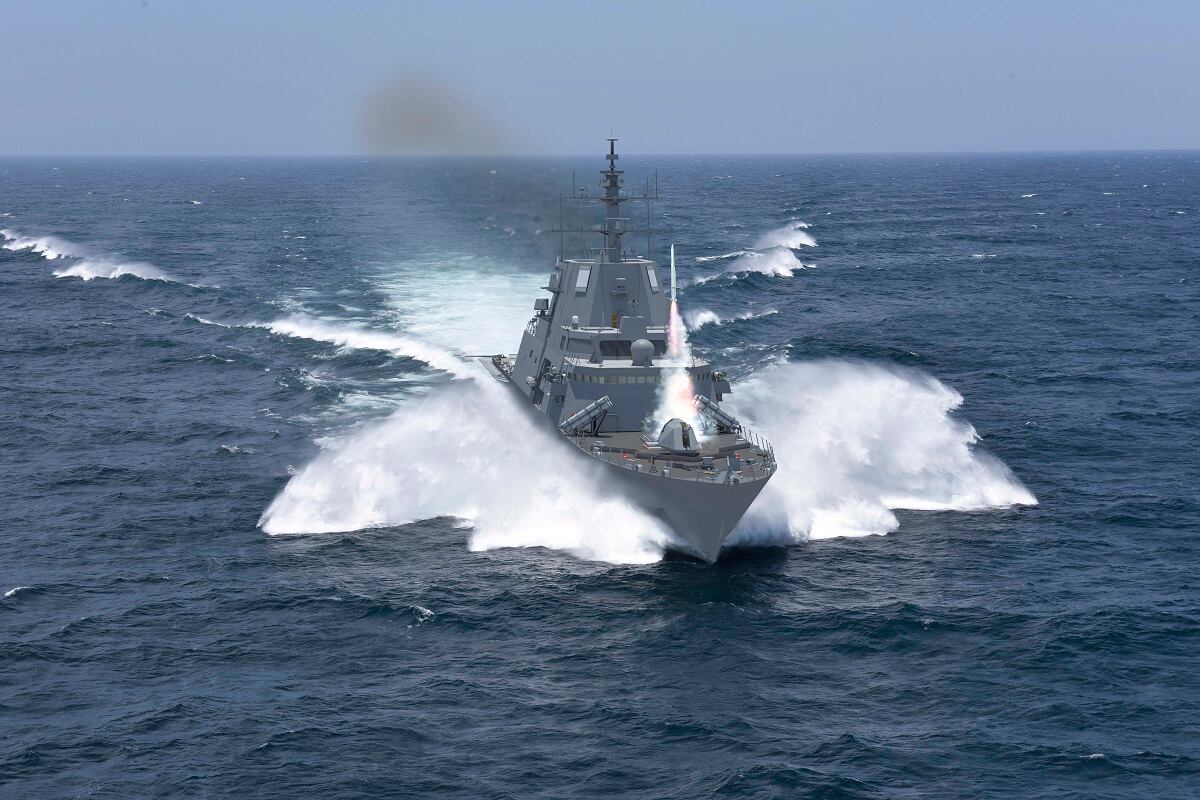Correction: A previous version of this commentary misidentified what the acronym FFG(X) stands for.
The U.S. Navy is, by its own admission, in trouble. Over the last several decades, its shipbuilding account has been underfunded and the Navy has too often mismanaged the money it did have.
The Navy has focused too much on high-end ships and has neglected the importance of less expensive, smaller vessels that can perform important combat missions on their own for sustained periods on the high seas, even in contested environments. No one has more respect for the carrier task force than I do, but the Navy needs additional numbers, presence and distributed strike force, and it needs all that as quickly as possible.
To its credit, the Navy is moving fast to rectify this problem by fast-tracking the new FFG(X) program.
Frigates are smaller than their more technically advanced counterparts, cruisers and destroyers. The frigate has historically been used for escort duties, low-end “show the flag” naval-presence missions, and limited offensive operations. The Oliver Hazard Perry-class frigates were a big part of the Reagan naval buildup, but the last one of those was retired in 2015.
Today the Navy doesn’t have any frigates, aside from the original 220-year-old sailing frigate, the Constitution — and that isn’t going on the high seas anytime soon.
What the Navy does have are littoral combat ships, which, as their name suggests, were designed for missions near shore. LCS can operate in blue water in combination with other ships, but not independently, and it can’t perform anti-submarine or anti-surface missions persistently or with credibility.
Hence the new frigate program. If it succeeds, and succeeds quickly, there’s a chance for significant progress toward President Donald Trump’s 355-ship Navy within the next few years. If it fails, or if it is delayed by long arguments over design or shifting requirements, it will be decades before the Navy has the vessels it needs. So the Navy is fast-tracking the program, chiefly by competing the new ship among contractors who will use existing, or “mature,” designs in order to shorten the development process.
That’s the reason for my concern about a new paper on the frigate by Ron O’Rourke of the Congressional Research Service. O’Rourke is a seasoned hand, and some of what he suggests in the paper is certainly worthwhile. I like the idea of building a bigger “growth margin” into the new frigate, which means pushing the shipbuilders to adjust their existing designs to allow for upgrading the frigate over time with new capabilities.
RELATED

But the paper also urges Congress to consider directing the Navy to use a clean-sheet design for the frigate, which would mean stopping the program while the Navy designs the ship from the ground up. That’s not necessary or desirable. It will delay production by years and probably add greatly to the estimated cost, which at $850 million per vessel is already more than I had hoped.
Moreover, I doubt that if the Navy is permitted to do its own design, it will be able to resist the temptation to add capabilities that characterize major surface combatants. The Navy likes high-end vessels, but that’s not the purpose of this program. We need a frigate, not a destroyer or cruiser masquerading as one.
Mr. O’Rourke also argues that the Navy has not fully considered the missions to be assigned to the new frigates. Yet, the Navy has been dealing with the mission shortfalls associated with LCS and its dwindling supply of older frigates for the past decade. The Navy knows what it needs precisely because it cannot execute the missions that it would otherwise assign to a frigate.
To be sure, there are issues with the current program. The Navy is only planning to build 20 of the new frigates. The number should be double that if the United States is serious about winning its great power competition with China and Russia. China alone is commissioning two new vessels every month, while typically our Navy acquires about 10 ships each year. Naval competition is in large part a numbers game, and we’re not going to close much of the gap without a lot more smaller ships.
Moreover, increasing the total FFG(X) buy would tend to lower the costs per vessel and make it possible to get more shipyards involved in the program. That would strengthen the nation’s defense-industrial base and encourage more downstream parts suppliers.
None of that, however, is a reason to delay the frigate while the Navy meditates on its requirements or argues with itself about a whole new design. We need hulls in the water, and that won’t happen if we make the best the enemy of the good.
In other words, damn the torpedoes, and full speed ahead with the competition for FFG(X).
Jim Talent is a former U.S. senator and representative from Missouri. He served 12 years on the Armed Services committees while in Congress.








